EU-China relations are experiencing a period of rising tensions. There is no reason for optimism that this will change any time soon. European Commission President Ursula von der Leyen emphasised in her 8 July speech to the European Parliament on EU-China relations that “[…] to move our relationship forward, we need to make real progress – and find fair solutions – on the issues where we have been deadlocked for far too long.”
Her words go to the heart of the problem – the Chinese government can and will not make any material concessions to the European Union in areas of core interest to the European side. These include Chinese support for Russia in its war against Ukraine; Chinese trade and industrial policy that undermine the level playing field and weaponise critical dependencies, most recently with export controls on rare earth metals; and market access for EU companies.
Making any true concessions on such issues would go against China’s global ambitions and the very nature of its system. In this context, the scope for the high-level 24 July EU-China Summit is very limited. And this reflects the fact that space for the EU’s future engagement with China has become extremely narrow. Zero expectations are likely to become the new normal in EU-China relations.
For the summit, it is important for the EU to be very clear on four major points of contention:
- Sino-Russian relations: China’s stance on the war against Ukraine is and will remain a heavy burden for bilateral relations.
- Trade imbalances and restrictions: China’s systemic overcapacities and possible trade redirection from the U.S. market are a serious concern for EU manufacturing. So are recent export restrictions on rare earths.
- Reciprocity: The EU could take a tit-for-tat approach, i.e. systematically restricting market access in sectors where it is unequal.
- EU-China Comprehensive Agreement on Investment (CAI): The agreement was a pipe dream when concluded in principle in December 2020. This has not changed and neither would a revision. The agreement should stay in the freezer.
Additionally, the EU could play a rhetorical surprise card. China has been following its own de-risking strategy before the term was even coined. The EU could use this to diplomatically disarm China’s interpretation of de-risking being protectionism in disguise.
The EU’s dos and don’ts for the summit
Even amid rising tensions, keeping diplomatic channels of communication and exchange open is crucial to foster mutual understanding, prevent costly mistakes and ensure clear messaging. The European Union should centre the upcoming summit around three dos and one don’t. If time allows – Beijing has already cut the summit to one day instead of two – European interlocutors could consider adding one rhetorical surprise card.
1. Do talk about Sino-Russian relations
China’s stance on the war against Ukraine is and will remain a heavy burden for bilateral relations while China maintains its supportive stance towards Russia. Europe faces perhaps its most existential crisis since WWII with its security architecture simultaneously threatened by an imperial Russia and an unreliable transatlantic partner, while China is „fuelling [the] Russian war machine.“
There may not be a fully fledged alliance between China and Russia and a good degree of mistrust exists on both sides. But they have clearly grown closer since Xi Jinping and Vladimir Putin announced their “friendship with no limits” in February 2022, shortly before Russia’s full-scale invasion of Ukraine.
China continues to call the war a “crisis”. Beijing has not condemned the war, even though it systematically violates the UN Charter and runs contrary to China’s own“peaceful coexistence” foreign policy framework. This framework includes the principle of “respecting each other’s territorial integrity and sovereignty”. From a Chinese perspective, the war may be regarded as an internal European issue rather than a topic for EU-China relations.
However, for the EU, it is a core issue. By now, it is clear that Russia could not conduct the war the way it does, if it was not for China. After Chinese foreign minister Wang Yi’s reported statement in Brussels earlier in July that China “can’t accept Russia losing its war against Ukraine as this could allow the United States to turn its full attention to China”, it is clear that China does not even hold up what has been called “pro-Russian neutrality” anymore.
China will remain on Russia’s side as long as it’s in their interests. This goes blatantly against Europe’s core security interests. It would be logical for von der Leyen and European Council President António Costa to make it abundantly clear at the summit that there can and will be no return to “business as usual” in EU-China relations as long while China supports Russia‘s imperial ambitions in Europe.
2. Do address trade imbalances and restrictions, show defense instruments
China’s industrial overcapacities represent a direct threat to European manufacturing. The so-called China shock 2.0 risks eroding competitiveness in key sectors, such as green tech and increasing dependencies from China at a time when resilience is paramount. Concurrently, China is following its own de-risking agenda, including actively reducing reliance on western imports.
The EU’s trade deficit with China is not new. Year-on-year trade data show the trade deficit was €305.8 billion in 2024, eclipsing 2023’s €297 billion deficit, “but lower than 2022’s record trade deficit of €397.3 billion”. Figures also show that EU exports to China decreased in 2023 and 2024, while Chinese imports decreased in 2023, but remained roughly the same in 2024. If this trend continues, it will increase the EU-China trade imbalance. This may be worsened by concerns about possible redirection of trade from the US.
While the US market is clamping down on Chinese imports, the EU remains one of the last largely open markets with high purchasing power. Chinese exports bound for the US could be redirected to the EU market, exacerbating the China shock. The Commission has set up a monitoring mechanism to examine the impact. Evidence that this may be happening in some sectors has showed up in trade data released in June 2025. But it is still too early to call this a trend.
By voicing concerns on trade imbalances, the EU cannot change the systemic nature of China’s overcapacities or export strategy. But it is still important for Chinese interlocutors to hear these messages repeatedly. The European side could make clear that the Commission will keep using the tools in place to address this issue – such as countervailing duties – and might pull this level more aggressively. This is not – as China labels it – protectionism, but self-protection.
Chinese export restrictions on rare earths – a weaponisation of critical dependencies – are another trade-related pain point for the EU. In April 2025, China introduced an export licensing regime on a number of these materials. Now, Chinese exporters must apply for permits and the approval process is opaque, slow and limited.
This rare earths policy poses a strategic risk to EU industrial firms reliant on these raw materials, such as the automotive, clean energy and aerospace sectors. It could potentially have a negative impact on short-term production. While this is a serious concern, the EU should be cautious in what it offers to settle this issue.
China has, for example, publicly stated an interest in “reciprocal measures to promote trade in compliant high-tech products with China”, which includes better access for Chinese high-tech products to the EU market.
Given China shock 2.0’s impact and the EU’s de-risking focus, the European side should not give in to pressure from Beijing. Instead, the EU should explicitly showcase its Anti-coercion Instrument, which may be used against the weaponisation of critical dependencies, such as the EU’s reliance on rare earths.
3. Do request reciprocity, make clear that access to the EU market is at stake
A lack of reciprocity – such as equal market access – in EU-China relations has been an issue since China joined the WTO in 2001. Nearly 25 years later, progress on the Chinese side has been made, but European businesses in China still encounter formal and informal barriers and experience discrimination compared to their Chinese counterparts.
The EU Chamber of Commerce’s European Business in China Business Confidence Survey 2025 reveals this situation has worsened in recent years. This trend will likely continue as the Chinese government pursues the explicit strategy of reducing reliance on foreign capital, know-how and technology. In short, it’s a policy aimed at replacing foreign businesses with Chinese ones wherever possible.
With the help of EU member states, the European Commission could take a sector-wise tit-for-tat approach in regard to reciprocity, although this is not in line with the European Union’s traditional free trade agenda. But the time seems ripe to try a reverse approach. This could involve systematically mapping EU sectors and products that lack reciprocity and maintaining the prospect of restricting Chinese companies’ access to them, while giving China the opportunity to make concessions for more openness.
The Commission has taken a step into this direction by using the International Procurement Instrument (IPI) for the first time since its 2022 introduction. In June 2025, the EU used this mechanism to restrict Chinese companies’ access to the EU’s medical devices procurement market. This case could serve as an example for future outcomes in sectors where reciprocity is lacking. After all, access to the Single Market is the EU’s key leverage vis-à-vis China – a lever that could be used much more strategically.
4. Don’t unfreeze the Comprehensive Agreement on Investment
The CAI belongs to a different era. Even a revision would not resolve the core issues in EU-China relations. It was a pipe dream when it was concluded in December 2020. This is because deliverables remained below expectations and prospects of enforcement were uncertain. That has not changed. But in recent months, the option to unfreeze CAI has re-emerged in some statements and discussions on both sides. This is a bad idea. The European Commission and Parliament should leave the agreement firmly in the freezer.
Originally, the European Union aimed to address structural imbalances in its relationship with China, such as unfair competition, discriminatory practices and unequal market access. In this context, the CAI was seen as a way to achieve what China’s WTO accession had failed to deliver: a more level playing field for European companies.
When the political deal was reached on December 30, 2020, the CAI appeared promising, on the surface at least. It included commitments to prohibit forced technology transfers, eliminate joint venture requirements in sectors such as automotive, and increase transparency around state ownership and subsidies. The deal also included environmental and labour commitments, which was a first for China. On paper, it looked like the deal could be a boon for sustainable development.
But closer analysis showed the agreement fell short. Some Chinese commitments reflected actions it had already taken – or intended to take – on its own terms, to minimise potential costs. Even if the agreement came into force, reliable enforcement would not have been guaranteed, as informal hurdles to market access would remain. Crucial areas, such as investment protection and government public procurement, were not covered. While the deal called on China to ratify key ILO conventions, this rang hollow amid credible reports of forced labor in Xinjiang.
The deal faced criticism for its poor timing. It was concluded during a global pandemic, obscurely originating in in China, just as the incoming Biden administration sought to renew transatlantic cooperation. Implementation remained uncertain, given China’s patchy track record on honouring international commitments.
But the CAI was never put to test in the real world as the European Parliament voted to freeze the deal in May 2021. This was because of China’s retaliation on EU sanctions over human rights violations with counter sanctions, including on MEPs, even though the parliament itself was a key player in the ratification process. Since then, China has unilaterally removed some of these sanctions, but this does not change the situation.
In short, the CAI was a misstep by the EU. Reviving it now would undermine the bloc’s economic security agenda and weaken its geopolitical credibility.
5. Consider playing a rhetorical surprise card
The EU delegation could surprise Chinese interlocutors by spontaneously talking about cooperating with and learning from China in regard to de-risking. This could rhetorically and diplomatically disarm Chinese criticism of the EU’s own de-risking agenda.
When the EU put forward its de-risking agenda in the context of its Economic Security Strategy in 2023, China was alarmed, calling it protectionism and “in fact de-coupling”. To turn the tables, EU interlocutors could repeatedly point out that security-related aspects have always played a vital role in Chinese economic and foreign policy, whereas these have unfortunately not been on top of the agenda of the EU for a while.
This means China should be understanding of EU’s de-risking strategy logic. Beijing has a long history of trying to reduce its critical dependencies. Its industrial policy has served this purpose long before von der Leyen coined the term “de-risking” in 2023. Additionally, China has repeatedly pointed out that it hopes the European Union becomes an independent global player that acts with “strategic autonomy”, referring to the EU’s own concept.
From a Chinese perspective, this means acting independently and autonomously from the US – and de-risking from the US – to achieve this. Of course, it is not in China’s interests for the EU to de-risk from China. But the European side could turn this into an intentional misinterpretation and provide the Chinese side with the following narrative: China would like to see the EU as independent global actor.
To achieve this, the EU needs to be successful with its de-risking strategy, reduce its exposure to blackmail and strengthen its capability to act. And China could contribute to this – technology transfers for processing rare earths and lifting tight export controls on these raw materials would be the perfect start.
Given the many unresolved core issues between the EU and China, it’s fair to say that having zero expectations could become the new normal in relations. Against this backdrop, the four dos and don’ts offer a sound compass for the summit, even if its results will likely be limited.
About the author
Cora Jungbluth is Senior Expert in the Europe’s Future Programme at the Bertelsmann Stiftung. Her research focus is on China, foreign direct investment and international trade, especially the role of emerging economies.
Read more about China and the EU
Unstable Grounds: Why Trump’s China Policy Cannot Guide Europe
Draghi Report and EV Tariffs: Why a Stop Now Would Send the Wrong Signal
Electric Vehicle Tariffs: The EU’s “Made in China” Predicament


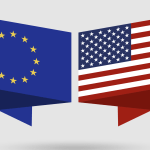

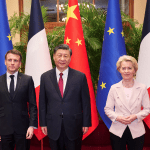
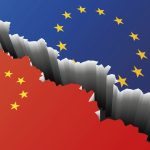
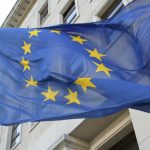
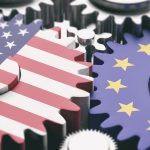

Write a comment